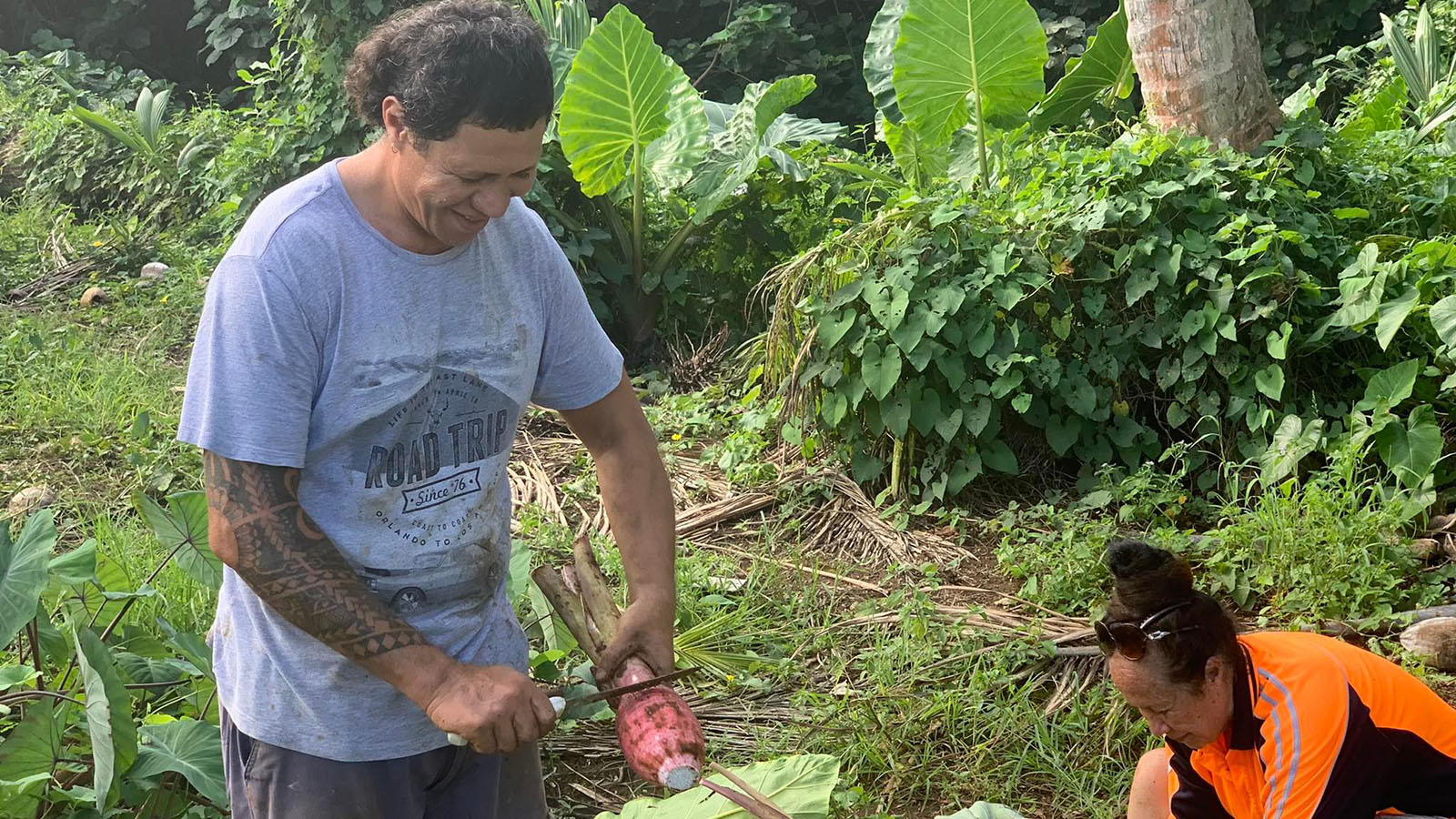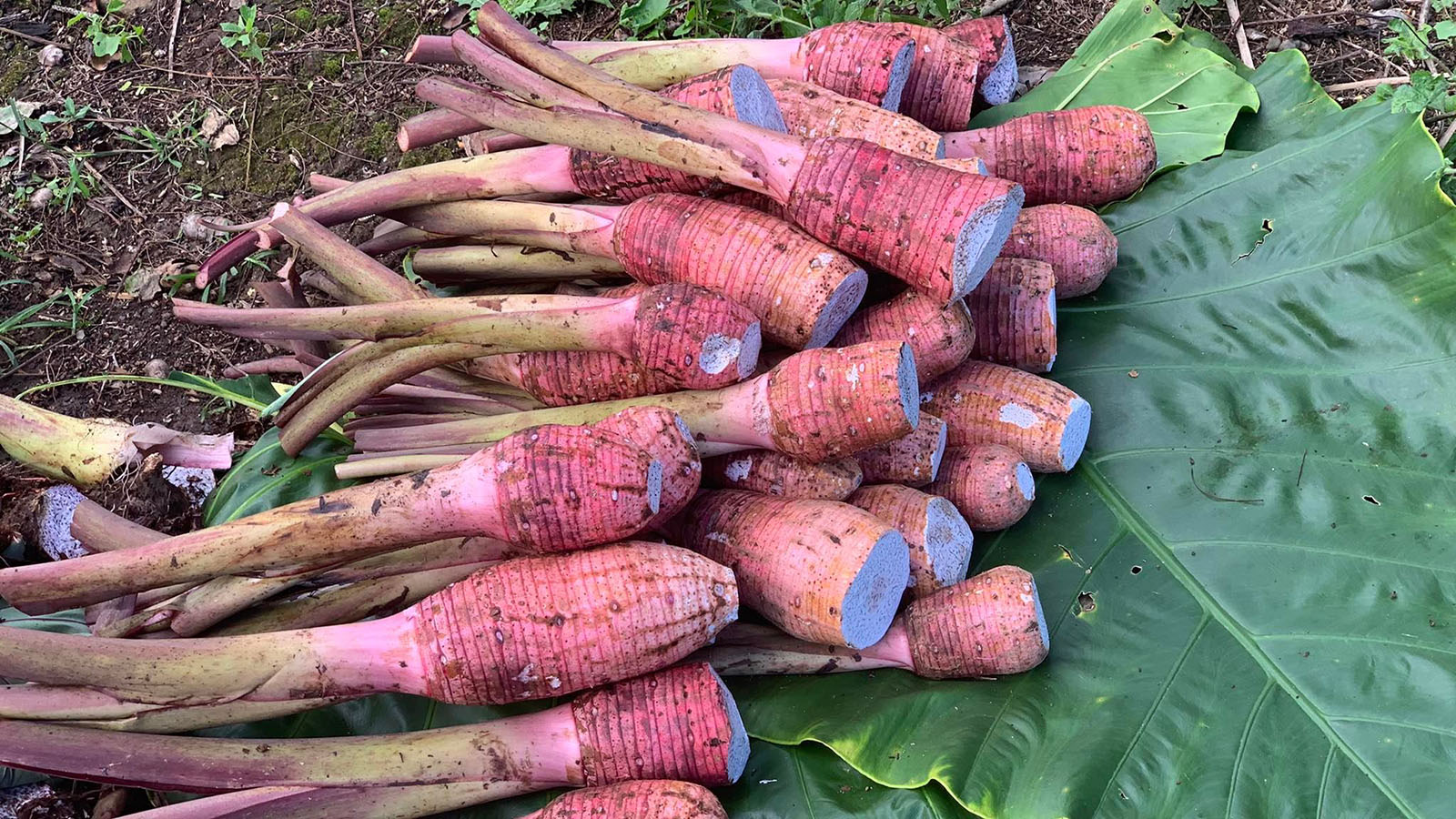Growing demand for taro
Wednesday 7 September 2022 | Written by Melina Etches | Published in Local, National

Taro growers harvesting last month. 22090607
There is growing demand for local taro in New Zealand and more growers are needed to increase the volume of the produce which is airfreighted out once a month.
Former Rarotonga grower Tereapii (Sabu) Matapo, who is well known in the farming sector, is visiting the island to help convince local farmers to grow taro for export with the new company, Tatanu Taro Ltd.
Matapo is encouraging people to plant more taro and has held meetings with up to 50 full time and part time growers to explain the market of the produce in New Zealand.
“My focus is on the growers,” said Matapo. “Number one as a grower is, we have to feed ourselves first before we look at other options like export.”
“The message I want to get across and for the growers to really take into consideration and ask themselves is – How am I going to benefit from sending my taro overseas?
“The growers have to really understand what’s involved so I wanted them to come and listen to know what is wanted or expected.”

Taro harvested to be exported to New Zealand. 22090606
From experience Matapo is well aware of the distrust and lack of confidence many growers have when it comes to the export of their taro.
However, he is quietly optimistic that by listening to the marketing proposals more growers will be convinced to export with Tatanu Ltd.
Matapo started planting full time after leaving school in 1972 with his father Matapo (Jr) Matapo until he passed away in the early 80s. The younger Matapo carried on growing commercially up until 2015, before moving to New Zealand.
Back in the 1996-97, the then Ministry of Agriculture encouraged people to grow taro because of a virus that was occurring at the time in Samoa, Fiji and Hawaii, said Matapo.
“So we were encouraged to grow taro, and at the time I was suffering from using weed killer spray, so I took that option to grow taro full time – nothing else.”
He worked out the cost production – how much it would cost to produce one kilo of taro and gathered more information to see if it really was worth doing it.
According to Matapo, growers sometimes don’t work out their cost production – “maybe sometimes they don’t want to know their losses because once they know they’ll give up”.
“I know this from my past experiences and I’d like to share my knowledge.”
Matapo also shared it usually “takes about eight months” for the popular starchy root crop to be harvested.
“We love our taro and we know the taste of the varieties, these days the dry land taro is grown with irrigation so now the pai taro (swamp) tastes similar.
“Exporting taro is good for people who want to earn money from their hard work growing good quality taro to earn money for their families and livelihoods.
“I’m so proud to be here talking to my own colleagues…I’ve done it myself for long enough.”
Matapo and Jimmy Tamaiva (formerly of Prince Taro) now have the newly-elected Murienua MP Teariki Heather on board to facilitate the export of taro at this end – peeled, packed and ready to be airfreighted.
A meeting will be held next Tuesday at T&M Heather to inform and update the taro growers of their new export company. The next consignment of taro will leave Rarotonga for Auckland later this month.




















































